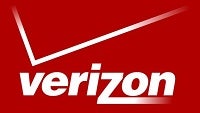Here are five popular phones bought by Verizon customers before the iPhone arrived

February 10th, 2011 was a historic day in the history of Verizon Wireless. On that day, Big Red finally started ringing up sales of the Apple iPhone. To be certain, Verizon customers had to wait a long time for the opportunity to buy the device. But that doesn't mean that during those years, Apple didn't have models that it tried to position as challengers to the iPhone.
The first name on this list is theLG Voyager. Verizon certainly positioned this model as a challenger to Apple's smartphone as it was the first featurephone to offer an HTML browser. The clamshell device had a pair of 2.81-inch screens that were considered "generous" for the time. The screen on the outside featured a resistive touchscreen, and inside the clamshell was a physical QWERTY keyboard. A brick of a phone at 118mm x 54mm x 18mm, Voyager owners could receive television using Qualcomm's MediaFLO service.
The LG Dare was another resistive phone offered by Verizon and LG. With a 3-inch screen, Verizon pushed the 3.2MP camera on the back of the phone, which was one of the better rear snappers on a featurephone. The Dare included a new UI, which was a slight improvement on the one used on the Voyager. Unlike the Voyager, the LG Dare featured an accelerometer, and at 107 grams, it was much lighter. The phone was equipped with an HTML Browser and users could get as many as three days of battery life with one charge. The resistive touchscreen on the Dare was a vast improvement over the one used on the Voyager
The Samsung Omnia was a Windows Mobile smartphone that featured an early version of TouchWiz and also offered some widgets for the home screen. In fact, users could set up two different home screen set ups, one for the office and one for home. The 3.2-inch screen had resolution of 240 x 400 and employed a single-core 624MHz processor with 128MHz of RAM. This is what passed for a high-end smartphone at the time, with support for DivX and XviD video out of the box. A 5MP rear snapper was included. The Omnia had one of the best browsers of that time, with a customized version of the Opera Mobile 9.5 rendering websites.
The Motorola DROID was the first Verizon phone that could stand up to the Apple iPhone. The handset was the first to come with Android 2.0 and as we all know by now, the device kicked off the Android revolution. The 3.7-inch capacitive touchscreen topped the 3.5-inch display on the iPhone, and the unit was powered by a single-core 600MHz TI OMAP 3430 CPU with 256MB of RAM. The DROID was accompanied by a fantastic marketing campaign by Verizon, stating that "everything iCan't, DROID Does". The Motorola DROID included a side-sliding QWERTY keyboard and featured voice guided turn-by-turn directions out of the box via Google Maps. The DROID also had a special car dock that would automatically put the device in a special hands-free mode. The handset had a spectacular build quality, and was built like the proverbial tank.
Available at Verizon months before the Apple iPhone 4 came, was the Motorola DROID X. This was a version of the DROID that came with a huge (for the time) 4.3 inch screen. A Single-core 1GHz processor was under the hood, with 512MB of RAM inside. An 8MP camera adorned the back with Android 2.1 (eventually updated to Android 2,3) pre-installed. The DROID X had a unique design, and launched without a physical QWERTY keyboard.
Many of you might remember owning one or more of these models. For Verizon customers, these were the phones covering the years 2007-2010 that Verizon offered as an iPhone substitute. That all changed on that February day in 2011 when Verizon customers desiring an iPhone could actually buy one.
The Voyager's touchscreen was not smooth at all, and the HTML browser was not as pleasant to use as mobile Safari. On the other hand, the Voyager did offer 3G connectivity allowing users to receive phone calls while using the browser. That was something that the iPhone could not do at the time. In addition, the Voyager could send pictures via MMS, something foreign to the OG Apple iPhone.
The LG Dare was another resistive phone offered by Verizon and LG. With a 3-inch screen, Verizon pushed the 3.2MP camera on the back of the phone, which was one of the better rear snappers on a featurephone. The Dare included a new UI, which was a slight improvement on the one used on the Voyager. Unlike the Voyager, the LG Dare featured an accelerometer, and at 107 grams, it was much lighter. The phone was equipped with an HTML Browser and users could get as many as three days of battery life with one charge. The resistive touchscreen on the Dare was a vast improvement over the one used on the Voyager
Many of you might remember owning one or more of these models. For Verizon customers, these were the phones covering the years 2007-2010 that Verizon offered as an iPhone substitute. That all changed on that February day in 2011 when Verizon customers desiring an iPhone could actually buy one.










Things that are NOT allowed: